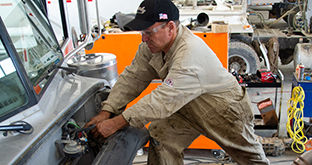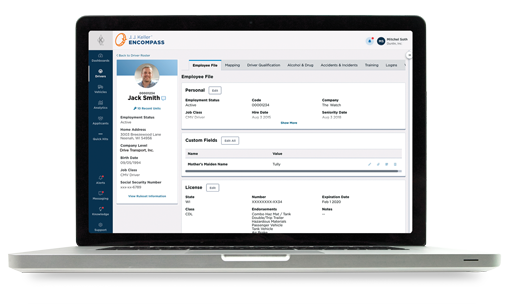Sr. Industry Business Advisor — J. J. Keller & Associates, Inc.
Four Ways to Keep Your Vehicles Moving
In the climate of supply shortages and tight availability of new vehicles, it's essential to keep your fleet inspected and properly maintained.
Published On: 09/26/2023


Written by:
Tom Bray
In the climate of supply shortages and tight availability of new vehicles, it’s essential to keep your fleet inspected and properly maintained. You need road-ready vehicles to avoid breakdowns, roadside inspection violations, out-of-service orders, and the worst-case scenario - a crash caused by a component failure or a driver unable to avoid a crash because of a component failure.
You can avoid these situations by:
- Having an effective maintenance program
- Using qualified technicians
- Training your drivers on vehicle inspections and making sure they do them, and
- Having the ability to conduct repairs wherever and whenever a vehicle is found defective.
Let’s look at each of these in depth.
Maintenance Program
Checking key vehicle components, such as the brake, lights, and tires, should be a part of all maintenance activities. If the vehicle is in the shop for any reason, all of these components should be checked.
Make sure that maintenance inspections occur often in order to catch vehicle problems early. Many carriers conduct a safety inspection on the vehicle whenever it enters a company facility or at a specific interval.
As well as maintenance inspections, an effective program includes preventive maintenance. Preventive maintenance is the practice of replacing parts and components in advance of failure. This will require mining the data in your maintenance records to determine when components are failing and then developing a replacement schedule based on this data.
To develop an overall preventive maintenance program and schedule, there are several sources you can use, including:
- The original equipment manufacturer’s maintenance recommendations,
- Your experience with similar vehicles, and
- Your maintenance records.
Qualified Technicians
The regulations require that anyone a carrier employs who works on the brakes or conducts periodic (annual) inspections must:
- Understand the related regulations,
- Understand the tools and techniques necessary to perform maintenance inspections, and
- Have one year of experience, adequate training, or a combination of experience and training.
The company must document that the maintenance technician is qualified to work on brakes and conduct periodic inspections. Documentation must be maintained according to §396.19 and §396.25.
These are the minimum requirements based on the regulations. However, as a carrier, you must ensure that your technicians exceed these basic requirements. Quality-control checks and insisting on ongoing training are standard best practices used to ensure the technicians exceed the requirements.
If your fleet is receiving vehicle violations during roadside inspections, seeing many road repairs, and/or discovering serious defects during vehicle service, your first step should be to review your maintenance program:
- Do you need the vehicles brought in for maintenance inspections more often?
- Should you add more components to the more frequent vehicle inspections?
- Do you need to adjust the replacement schedule for specific components?
You need to track and trend your maintenance data to be able to answer these questions and remedy the root causes of challenges and problems facing your department.
Driver Inspections
An essential step in your maintenance success is training drivers on vehicle inspections. However, before training drivers, you must determine the level or degree to which your drivers will inspect the vehicle.
For example, let’s look at inspecting one critical vehicle system - the brakes.
- Do you want drivers to inspect the brake components only visually, or do you want them to get "hands-on" with the brakes and physically check brake adjustment?
- Do you want your drivers doing a full-function check on the system (leaks, alarms, button pop-out, compressor buildup and cutout, parking brakes, and service brakes) during all inspections, or do you only want them doing that during specific inspections?
Whatever you decide determines your driver training program requirements. Note that your decisions could influence maintenance activities - the less the drivers inspect, the more your technicians will have to check on a regular basis.
Once your drivers are trained, the next step is verifying that they are doing the inspections. This involves verifying that vehicle problems the driver should be discovering (based on what you have decided you want them doing) are being discovered and reported to you by drivers rather than by the technicians or, worse yet, officers.
Repairs
One key to making all this work is quickly fixing a problem when it is discovered. This is true regardless of where the problem was found. You need to be able to promptly address a driver-reported defect anywhere your fleet operates, not just in your shop.
Consequences
The consequences of not having an effective maintenance program, one that doesn’t include preventive maintenance, driver inspections, and timely repairs can include:
- More violations during roadside inspections,
- More vehicles placed out of service following roadside inspections,
- Increased downtime, which converts into lost revenue,
- Preventable breakdowns,
- Upset customers from missed pickups/deliveries from broken-down vehicles, and
- Crashes.
Don’t go it alone. Talk with a compliance specialist about the benefits of using the J. J. Keller® Encompass® Fleet Management System to manage your vehicle maintenance program! Call 855-693-5338 today!
You may also enjoy the following articles:
Sign up for our newsletter!
We'll help you stay on top of regulations, best practices, and fleet industry news. Sign up to receive a monthly email notification with links to our most recent blog articles, free resources, and event invites.
